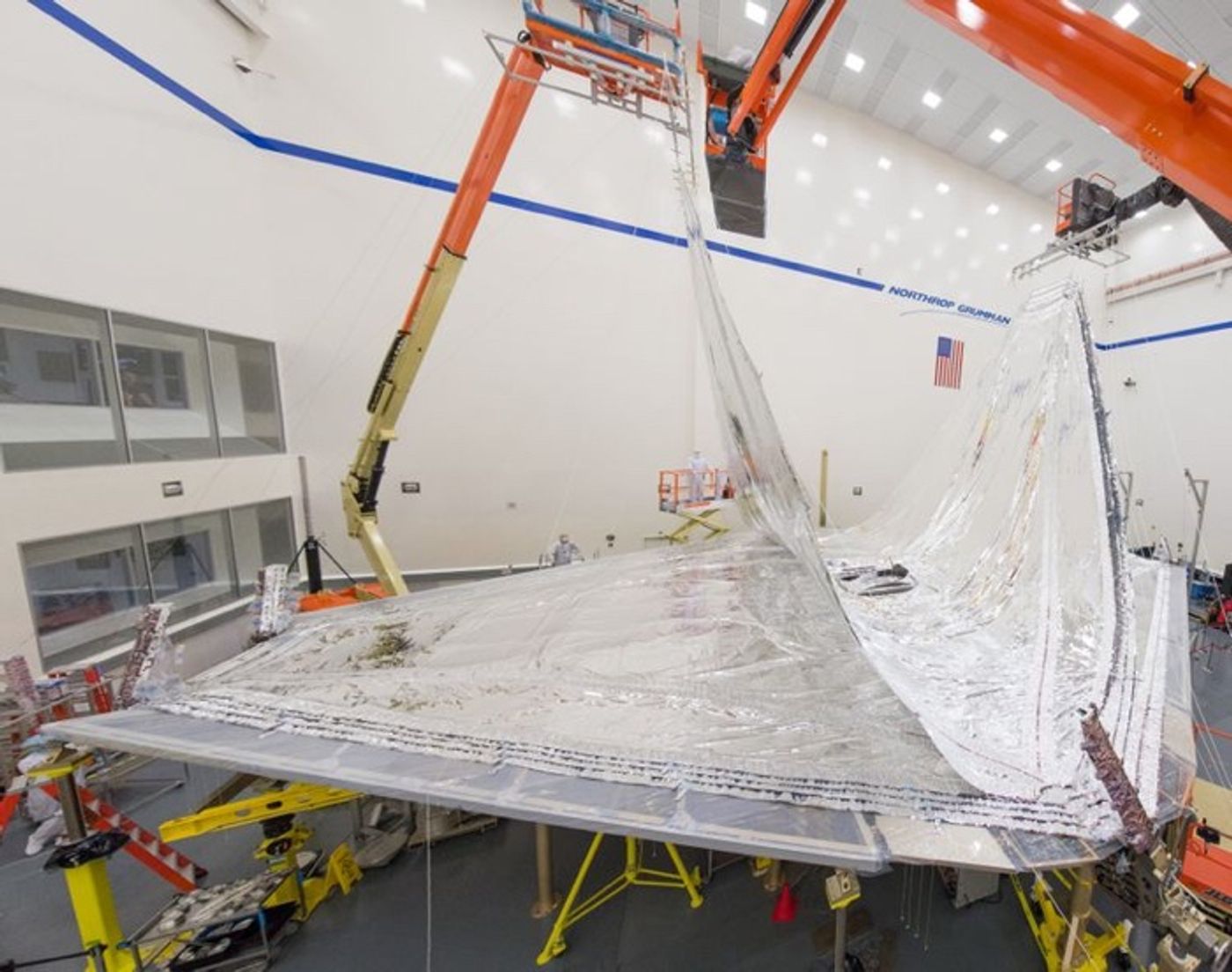The James Webb Space Telescope's Sunshield is Being Installed and Prepared for Testing
NASA’s James Webb Space Telescope (JWST) will soon replace the Hubble Space Telescope as the space agency’s main space observatory, but such a feat isn’t scheduled to happen until late 2018 or early 2019.
The heart of the JWST is currently undergoing cold temperature stress testing in Houston, Texas to ensure it can handle the temperatures of outer space, while other teams performed successful communication testing on the space telescope’s radio hardware that will enable us to stay in touch with it after it’s launched into space.
Image Credit: Northrop Grumman Aerospace Systems
Another team in California is currently installing the five separate layers of the massive sunshield on the space telescope’s chassis. As the name suggests, this component will protect the JWST’s sensitive infrared instruments from the scorching temperatures emitted by our Sun.
Without this shield, the components wouldn’t operate at the proper temperature, which means they could deliver inaccurate readings or worse, become damaged by the Sun’s intense radiation. The shield will slash temperatures by as much as 570º Fahrenheit between the hot and cold sides of the JWST, allowing the components to operate at the desired -393º Fahrenheit in space.
"This is a huge milestone for the Webb telescope as we prepare for launch," said Webb sunshield manager Jim Flynn from Northrop Grumman Aerospace Systems. "The groundbreaking tennis court sized sunshield will shield the optics from heat and assist in providing the imaging of the formation of stars and galaxies more than 13.5 billion years ago."
Related: How the James Webb Space Telescope will help us study Proxima b
Each kapton layer that makes up the sunshield is as large as a tennis court but only as thick as a human hair. They both look and feel like aluminum foil, and with that in mind, there’s a lot of room for error.
Ensuring the sunshield deploys as expected without any tears is an important task, and that’s why after installing the five layers that comprise it, the team will roll them up and test the deployment mechanism later this month to ensure that the JWST spreads its wings properly.
It would be better to catch a glitch in the deployment system while it's still on the Earth’s surface because it would be more feasible to make repairs that way. Once it’s in space, fixing any bugs with the JWST becomes much more challenging.
The waiting game continues until the JWST officially launches into space, but it should provide answers for the plethora of questions we have about our universe. In the end, it should all be worth it.









